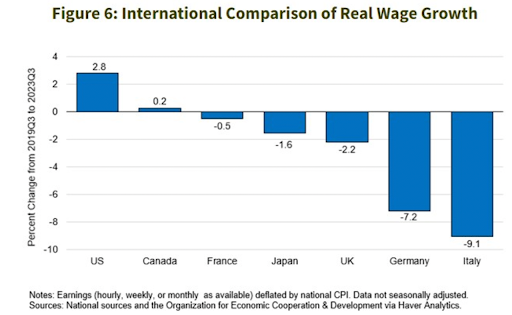
One of the most striking trends in the US labor market in recent years is the rapid growth of real wages for the lowest-paid workers. This is not a coincidence, but a result of deliberate policy choices by state and local governments to raise the minimum wage.
According to a new study by Arin Dube, an economist at the University of Massachusetts Amherst, the minimum wage increases that took effect between 2013 and 2019 raised the average annual earnings of workers in the bottom 10% of the wage distribution by 7.5%, or $1,900. This is a substantial boost for low-income families, especially compared to the stagnant or declining real wages for most workers in the previous decades.

Dube’s study, which was published in the American Economic Journal: Applied Economics, uses a novel method to estimate the causal effects of minimum wage policies on wage inequality. He compares workers in neighboring counties that are located on different sides of state borders, and therefore face different minimum wage levels.
Register for Tekedia Mini-MBA edition 19 (Feb 9 – May 2, 2026): big discounts for early bird.
Tekedia AI in Business Masterclass opens registrations.
Join Tekedia Capital Syndicate and co-invest in great global startups.
Register for Tekedia AI Lab: From Technical Design to Deployment (next edition begins Jan 24 2026).
This approach allows him to isolate the impact of minimum wage changes from other factors that might affect wages, such as regional economic conditions, labor market trends, or demographic shifts. He also accounts for the possibility that some workers might cross state borders to find better-paying jobs, or that some employers might relocate or adjust their hiring practices in response to minimum wage hikes.
The main finding of Dube’s study is that minimum wage increases have significantly reduced wage inequality at the bottom of the distribution,
Dube has compiled a comprehensive dataset of state-level minimum wages and hourly wage distributions from 1979 to 2019, using data from the Current Population Survey (CPS). He has also created a measure of the “bite” of the minimum wage, which is the ratio of the minimum wage to the median wage in each state-year. This measure captures how binding the minimum wage is for the distribution of wages, and how it varies across states and over time.
Using this data, Dube has found that the bite of the minimum wage has increased significantly since 2014, reaching its highest level since 1980. This reflects the fact that many states have enacted large minimum wage hikes in recent years, often through ballot initiatives or legislation.
For example, California raised its minimum wage from $8 in 2014 to $13 in 2020 and plans to reach $15 by 2023. Similarly, New York increased its minimum wage from $8.75 in 2015 to $15 in 2020 for New York City and will gradually phase in $15 for the rest of the state.
These minimum wage increases have had a clear impact on the wages of the bottom decile of earners, which are those who earn less than 10% of all workers. Dube has calculated that the real wage (adjusted for inflation) of the bottom decile has grown by 13.4% from 2014 to 2019, compared to only 6.1% for the median worker and 7.5% for the top decile.
This means that the bottom decile has experienced a faster wage growth than any other group in the wage distribution and has narrowed the gap with the median and the top.
The figure below shows the trend of real wages for different groups of workers since 1979, using Dube’s data. The vertical lines mark the years when the federal minimum wage was increased. As you can see, the bottom decile has seen a sharp increase in its real wage since 2014, after decades of stagnation or decline. The median and the top decile have also seen some growth, but at a slower pace.
What are the implications of this trend for inequality and poverty? Dube has estimated that the increase in the bite of the minimum wage since 2014 has reduced inequality by about 5%, as measured by the ratio of the top to bottom decile wages. This is a substantial reduction, given that inequality has been rising steadily since the late 1970s.
Moreover, Dube has found that the minimum wage increases have reduced poverty by about 2 percentage points among low-wage workers, which translates into about 1.3 million fewer workers living in poverty.
These findings suggest that raising the minimum wage is an effective policy tool to improve the living standards of low-wage workers, and to reduce inequality and poverty. Of course, there are other factors that affect wages and employment, such as macroeconomic conditions, technological change, globalization, education, and labor market institutions. But as Dube’s data shows, minimum wage policy can make a big difference for millions of workers who are struggling to make ends meet.



